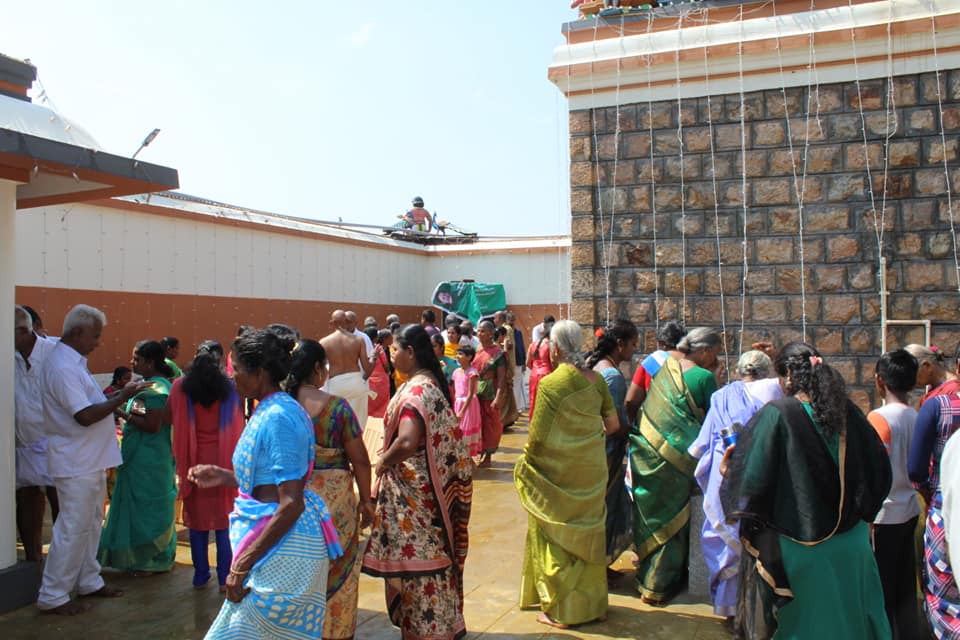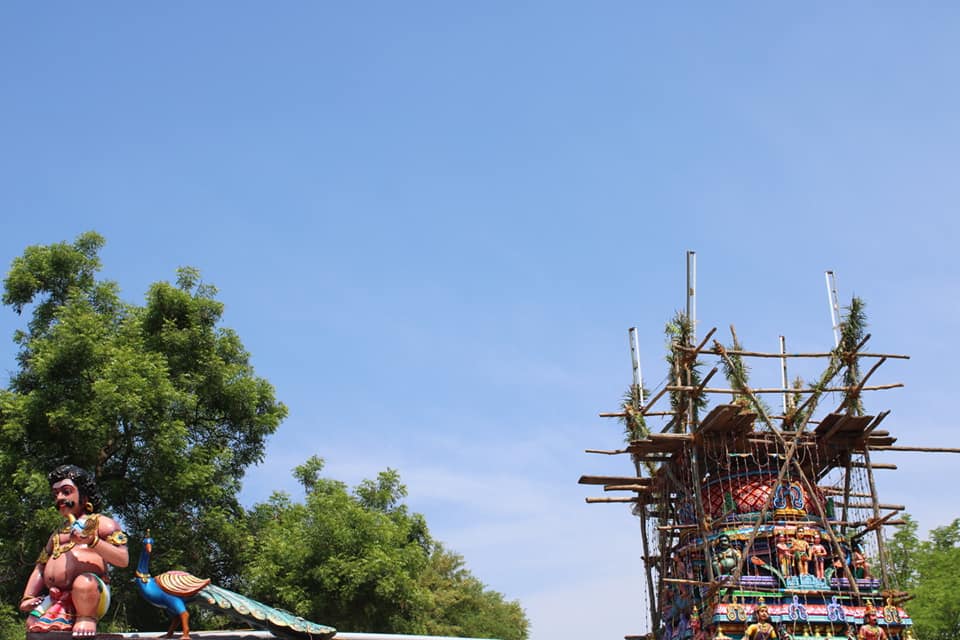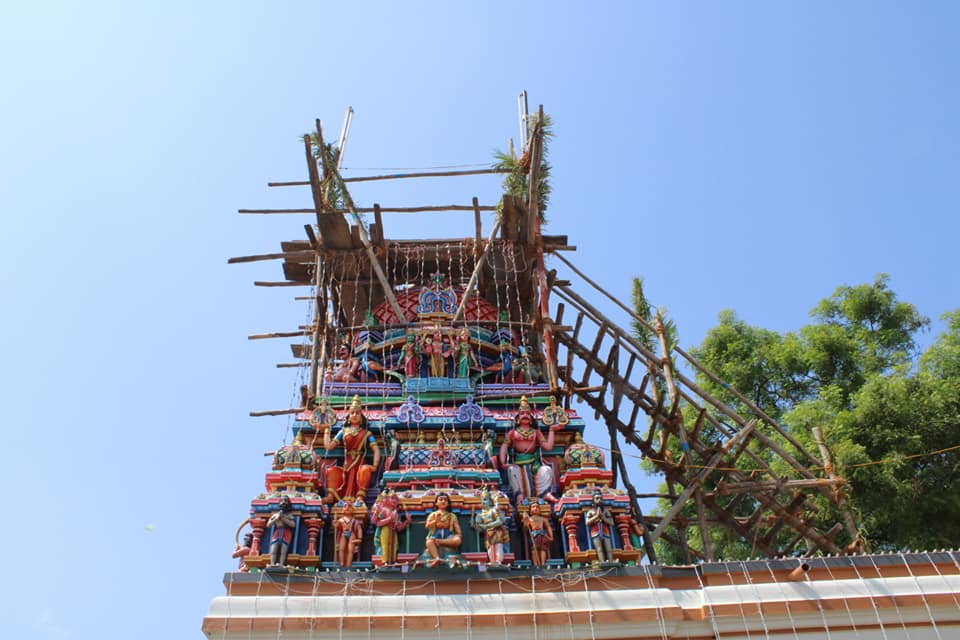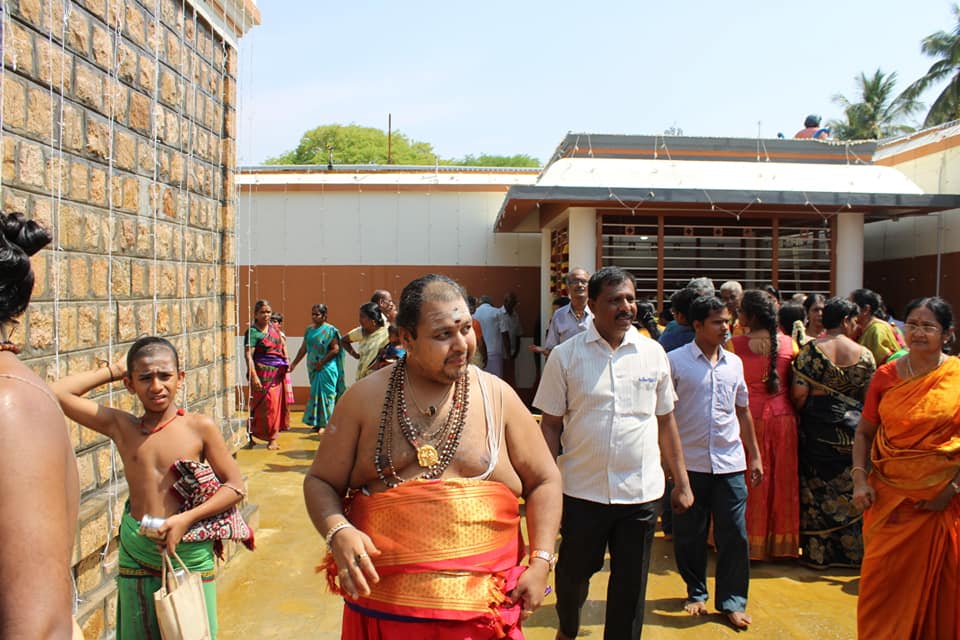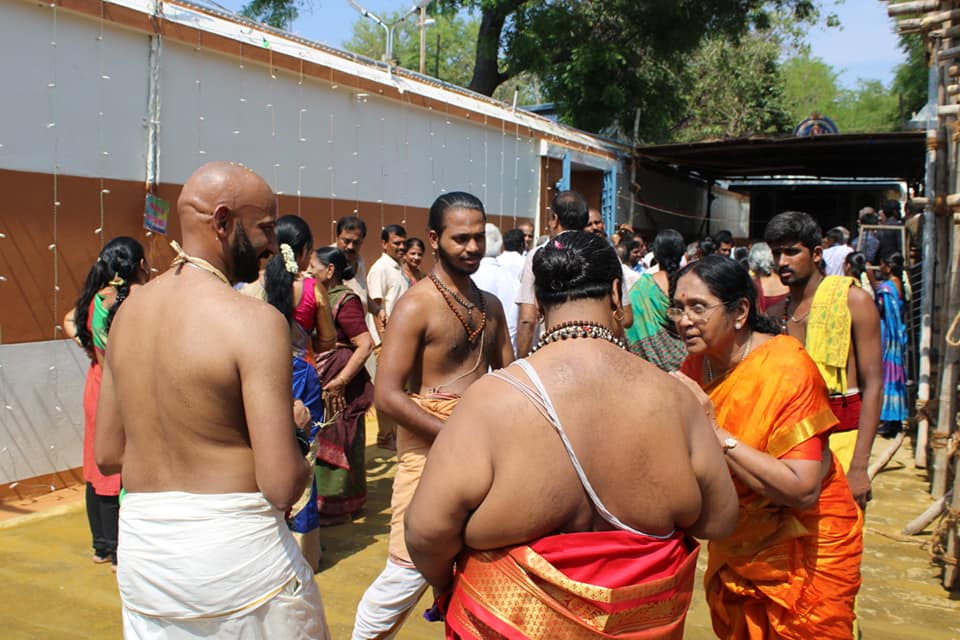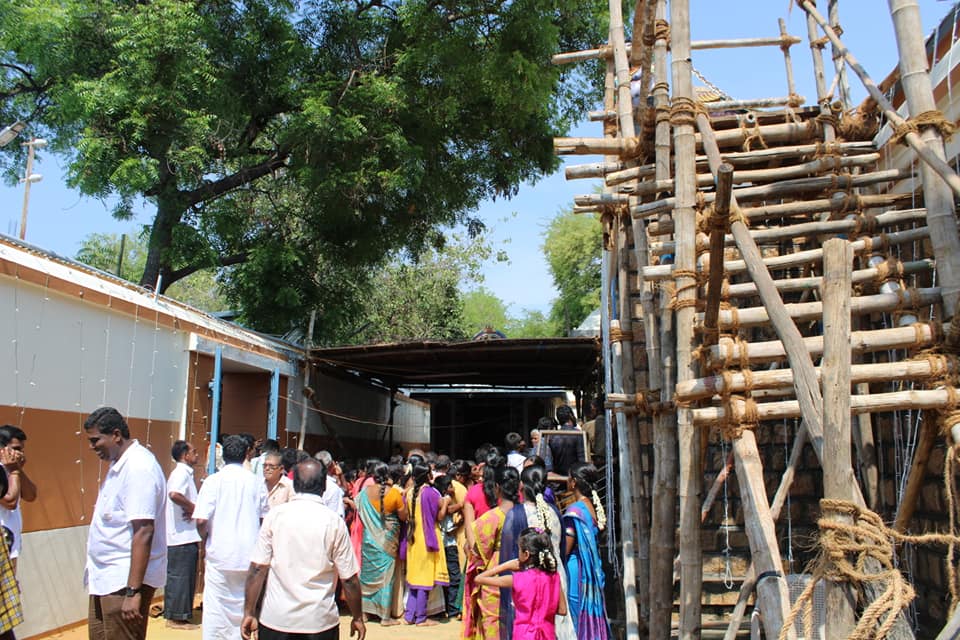Kumbabhishekam, also known as Kumbhabhishekham, is indeed an important ritual performed in Hindu temples. It is typically conducted once every 12 years to renew the divine energy and sanctity of the temple.
The main purpose of the ritual is to consecrate and re-energize the temple’s deities and the sacred space within.
During Kumbabhishekam, water from various sacred rivers is collected and ceremoniously poured over the temple’s main deity and other idols.
This water is considered sacred and is believed to carry the divine essence of the rivers.
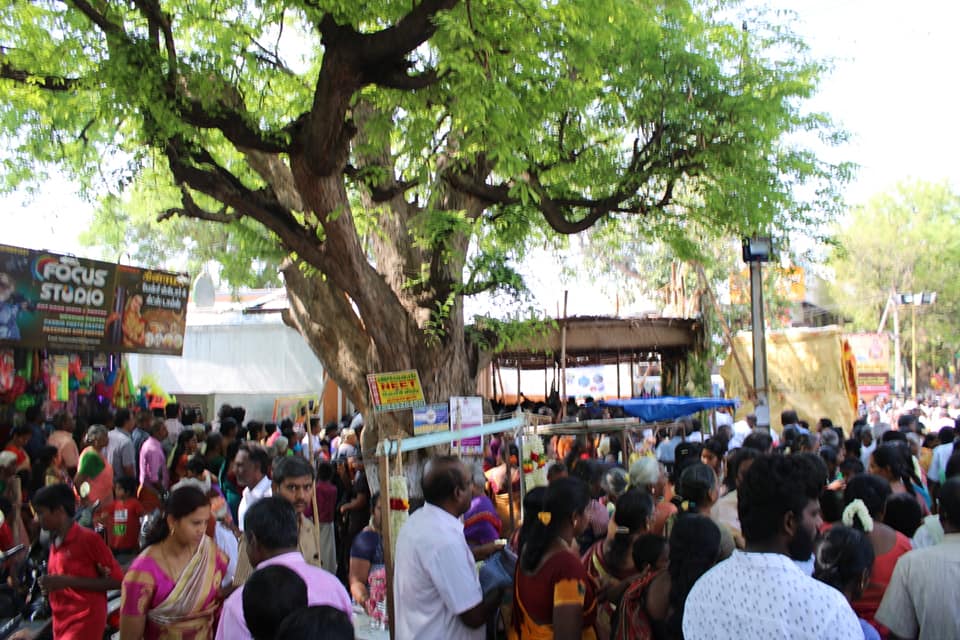
The act of pouring this consecrated water over the deities is believed to revive their divine presence and rejuvenate the spiritual vibrations within the temple.
In addition to the idol consecration, the ritual also involves the installation of a Kalasam (dome) on top of the temple tower. The Kalasam is a sacred vessel usually made of metal, and it represents the pinnacle of spiritual energy.
It is believed that the Kalasam acts as a channel to connect devotees with the divine energy of the temple.
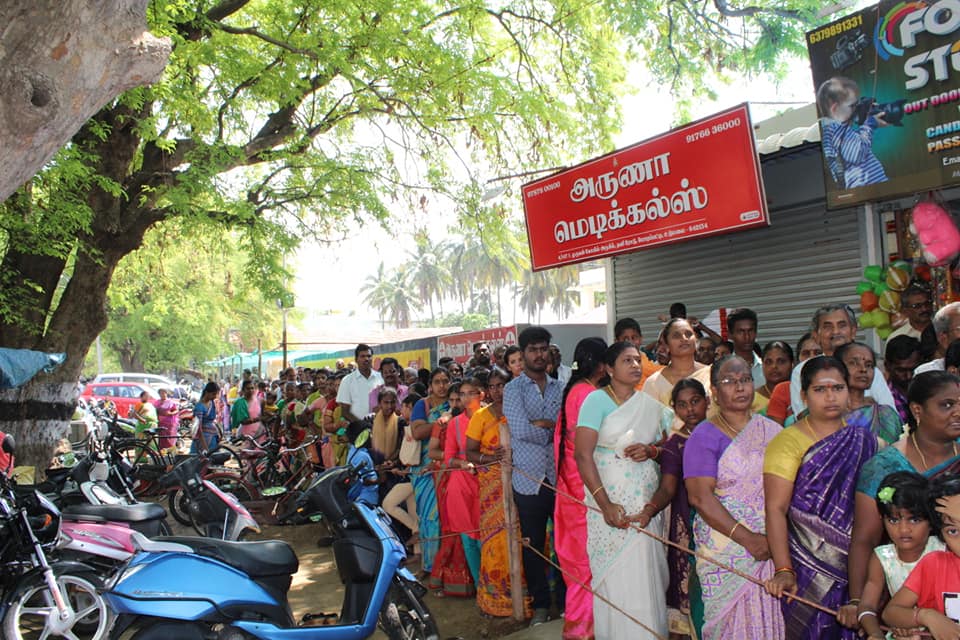
Hence, some devotees believe that they can receive blessings and divine grace by focusing their prayers towards the Kalasam, even without physically entering the temple.
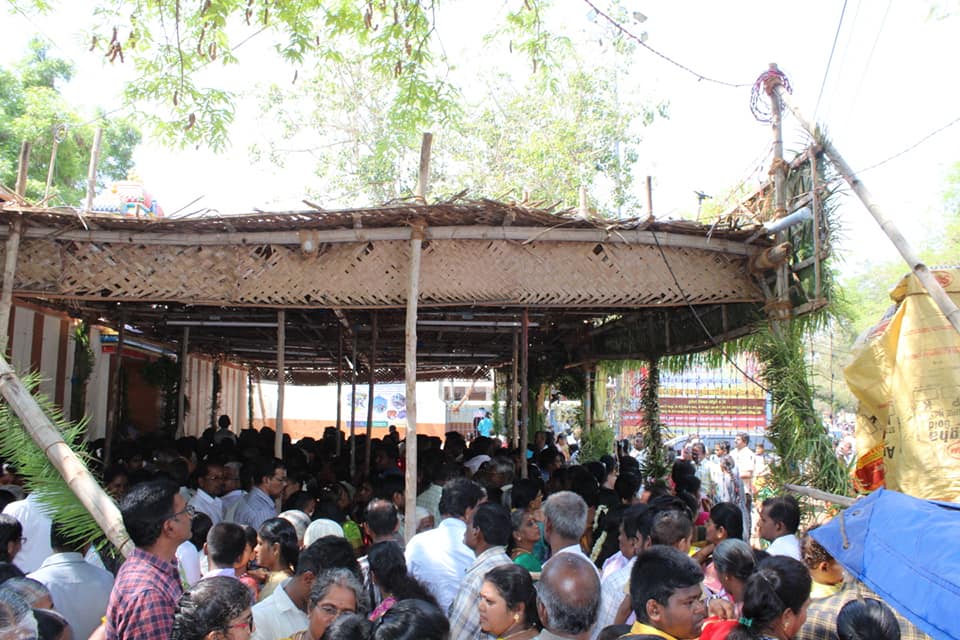
It is important to note that while the Kumbabhishekam ceremony is significant in Hindu temple traditions, beliefs and practices may vary across different regions and sects within Hinduism. The ritual holds great importance and is considered a time of spiritual renewal and auspiciousness for the temple and its devotees.
Classification of the number of Kundams
Single Kundam – forming a thumb.
Panchakani – Five Kunds.
Nawagni – Setting up nine kunds.
Uthama Baksham – 33. Constipation.
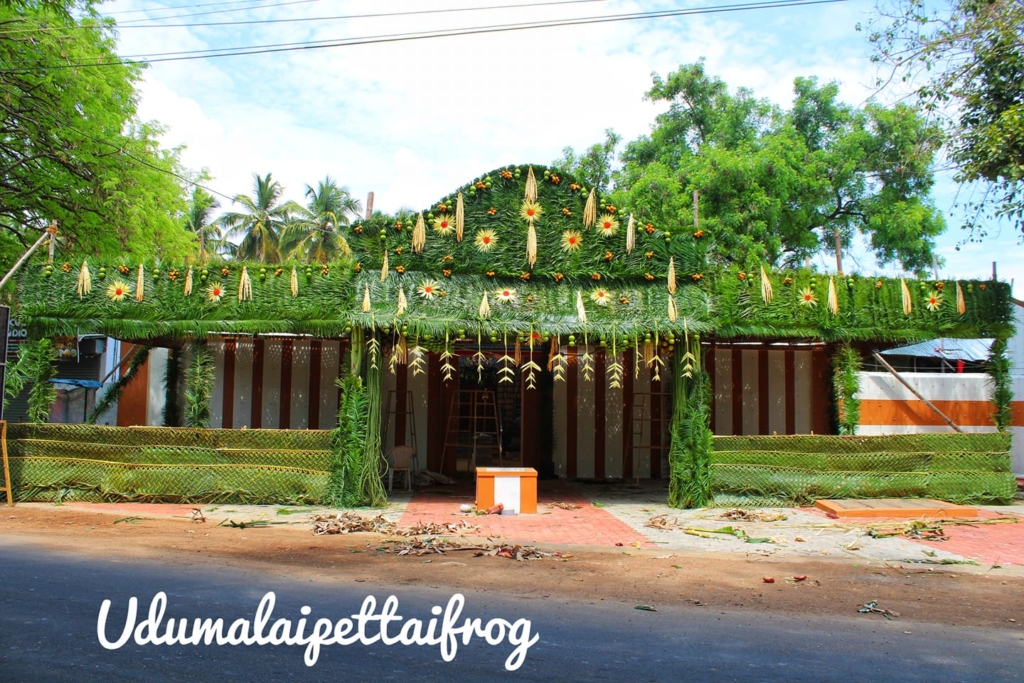
There is a rule that the kambabhishekam yoga is to be done repeatedly. It is customary for 2. It is 2 hours, 4 hours, 8 days, 12 time.
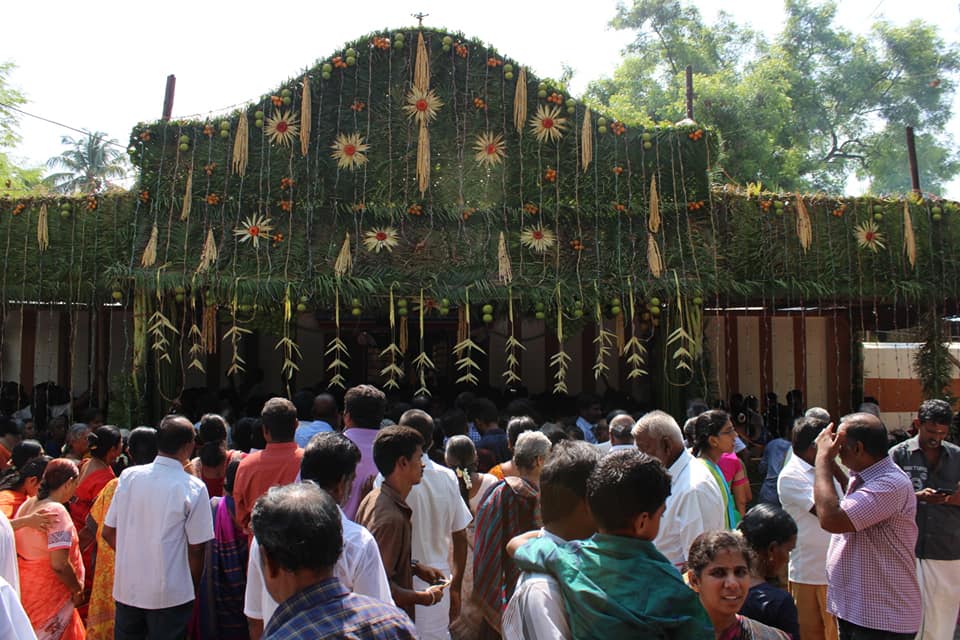
Works carried out
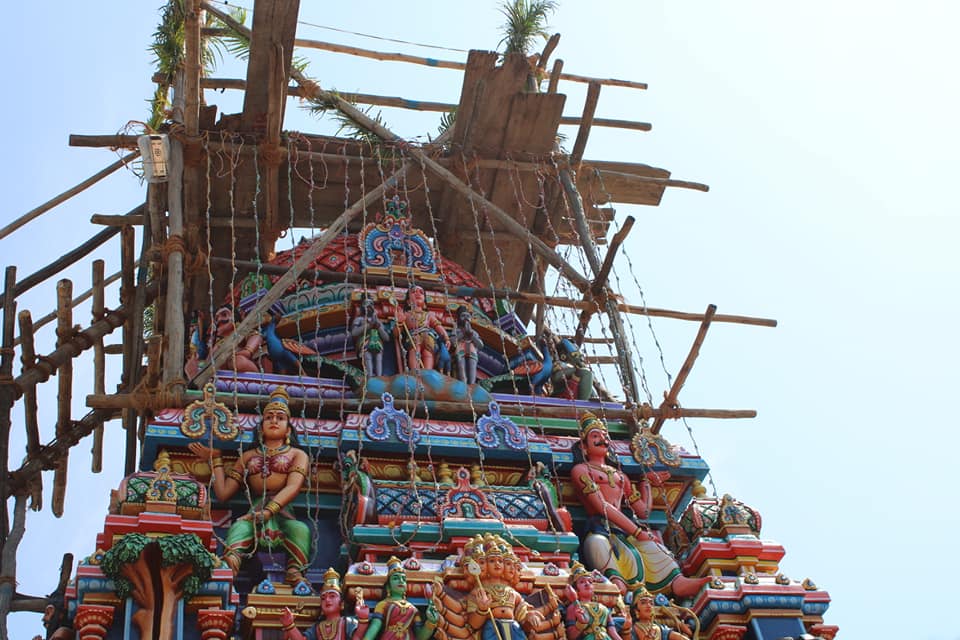
Ashta Bandam – Adding the mum and the pedigree by the eight substances. This is medicine.
